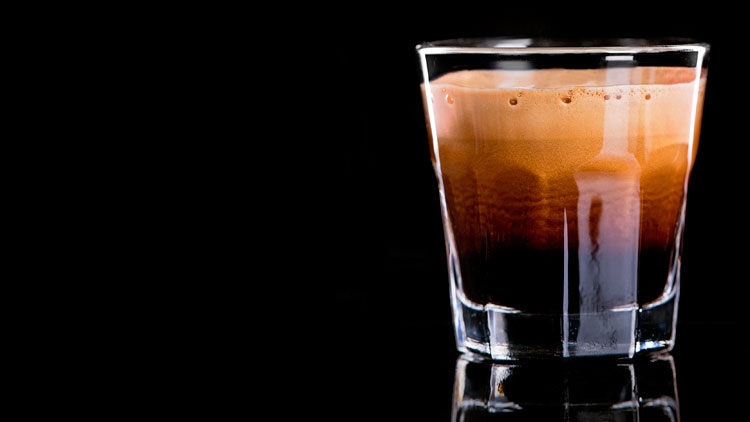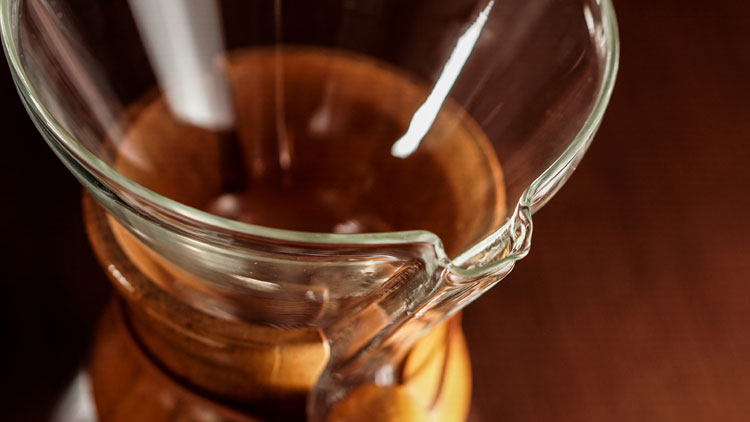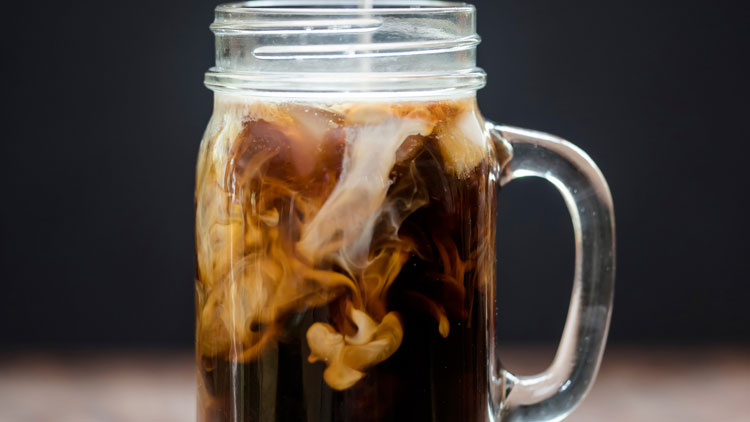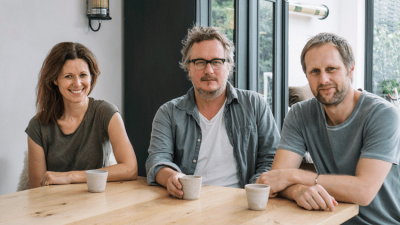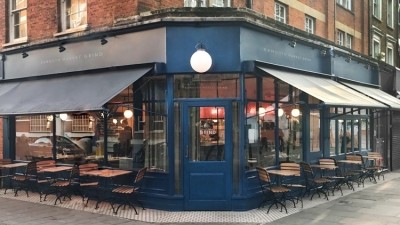Six ways to serve coffee in your restaurant
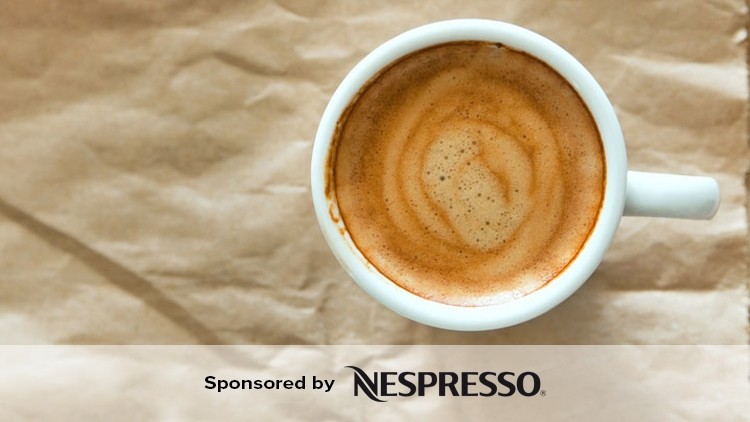
There’s less consensus on how to serve that brilliant cup of coffee, however, with a restaurant’s method of choice often depending on the size of the kitchen, the number of coffees they typically serve and the skills of the people who are making it.
Luckily there’s a coffee method out there for every type of establishment, from the small neighbourhood bistro to the large all-day chain, the high-end restaurant to the casual dining brand, it just requires knowing what the best fit is for you.
Here’s six methods, who’s using them, and why.
Bean to cup
Mention bean-to-cup to a coffee aficionado and you’re likely to get a frosty reception. Yet the once trusty workhorse of garden-centre cafés and sandwich shops is now suitable for more high-profile places thanks to vast improvements in technology.
London members’ club 67 Pall Mall, whose restaurant does a brisk trade from breakfast through to dinner, recently invested in two bean-to-cup machines after being convinced by the quality of the final drink. “Our members are a discerning bunch and they drink coffee all the time – it has to be great,” says general manager Niels Sherry.
The two Schaerer Coffee Art Supersteam models can make 40 different drinks at the touch of a button, and includes automatic milk foaming. “The technology of bean-to-cup machines has improved massively,” says Justin Stockwell, MD of Caffeine Limited, which supplied the equipment to the club.
Key to the improvements have been changes to heat control in the brew chambers and sophisticated air pumps in the steam wand that automatically alter the intensity and direction of the air flow. Prices have also come down with bean-to-cup machines starting at £3,500 with a powerful 300-cup-an-hour model costing around £8,500.
“Restaurants like them because of the consistency – they make a perfect cup every time – and there is better stock control,” says Stockwell. “It portions the coffee exactly every time, so there isn’t the wastage you get with a grinder.”
Capsules
Capsules represent one of the biggest developments in coffee over the past decade and have helped restaurants massively improve the quality and consistency of the coffee they serve, with minimum fuss.
“Capsules provide the easiest, most hassle-free access to premium-quality coffee. You simply insert the capsule, press a button and brew a delicious cup of coffee, and that quality is consistent cup after cup,” says Jean-Baptiste Coutant, Nespresso UK's B2B commercial manager.
“Consistency and reliability are key. As an operator, you want to know that your portioned coffee machine will brew a consistently delicious cup of coffee, and customers can expect that every time.”n
Nespresso uses freshly roasted coffee in its capsules and says its specially designed aluminium packaging preserves the freshness
and taste of the coffee. Its capsules are recyclable and wastage
is kept to a minimum.
In terms of price, a single pod of Nespresso’s Espresso Forte costs 31p (according to its trade website) and can be used on machines that require little to no staff training. The company has also developed coffees aimed specifically at the fine-dining market as part of its Exclusive Selection range.
“We have coffee exclusively available to Michelin-starred restaurants that is sourced from some of the rarest beans in the world, forming part
of our Exclusive Selection range,” says Coutant.
At Lavazza, Barry Kither, away-from-home sales and marketing director, says that sales of capsule systems to pubs and restaurants is the fastest growing part of the business. Recent launches have included the Lavazza Blue Wega espresso machine, which includes a temperature-controlled steam arm that foams milk automatically.
“The capsule system means there is no grinder, no need for daily calibration and, with no ground coffee mess, cleaning is incredibly simple and quick,” he says. “Pair this with the need for no barista training and you have the most cost-effective and consistent solution there is.”
Like bean-to-cup machines, capsule machines also give operators the ability to offer many different styles of coffee at the touch of a button. Nespresso has 13 Grands Crus in its Business Solutions range, at varying intensities, plus two exclusively for its fine-dining customers in its Exclusive Selection range.
Lavazza has 12 coffees in its capsules range, running from ‘velvety and delicate’ to ‘rich and full-bodied’.
Full-on barista
It’s a sign of just how entrenched coffee culture has become that it’s no longer just hip London restaurants, such as Caravan and Lyle’s, that have dedicated baristas.
Hermitage Road Bar and Restaurant in Hitchin, Hertfordshire, which is part of the Anglian Country Inns pub and restaurant group, employs head barista Magdalena Dorofejczuk to look after all aspects of its coffee operation and has invested in barista courses for her at the London School of Coffee.
“You can have the best coffee and the best machines, but you need the right people to get the most out of them,” says Anglia’s commercial director Howard Nye. “Good-quality coffee has really helped grow sales.”
The 150-cover restaurant, which is also home to a 40-cover coffee shop, sells upwards of 1,000 coffees on a Sunday, but these kinds of sales can only be achieved with significant investment. Speciality Coffee Association-approved courses at the LSE start at £285 a day and the restaurant’s Marzocco GS3 and Faema E71 machines cost around £8,000 and £10,000 respectively. The coffee, supplied by Caravan, also comes at a cost, while baristas tend to command higher pay than conventional waiting staff with salaries in the £20,000 to £25,000 range.
“As you grow it is possible to bring costs down,” says Nye. “We are working with Lincoln & York roasters who produce a house blend for us in bulk for our other restaurants. And we also now do a lot of training in-house with staff teaching other staff.”
Low tech
Chef Adam Simmonds’ 23-cover pop-up restaurant of The Test Kitchen in Soho serves experimental small plate food, and his choice of coffee method mirrors this approach to cooking.
The Test Kitchen’s coffee offer centres on filter brews made with Chemex pour-overs and Aeropress plungers.
“We wanted to offer something different and filter really brings out the flavour of the kind of lighter, sweeter coffees I like,” says Simmonds. “They go really well with food and it looks great when we’re making them.”
There’s certainly plenty of theatre to ordering a coffee at The Test Kitchen with beans ground fresh to order and weighed on electronic scales to ensure optimum extraction – 16.5g for the Chemex and 18.5g in the Aeropress for an espresso-style drink.
“It takes longer for sure and staff have to pay more care and attention, but it’s something different,” says Simmonds.
At £4 for the filter coffee and £4.50 for the Aeropress, the drinks also make a decent return, and mean the restaurant has not had to shell out thousands on an espresso machine.
Cold Brew
Not to be confused with iced coffee, cold brew is huge in New Zealand and Australia, and is starting to make waves in British coffee cups.
The process involves steeping coffee in cold water over long periods,
which results in a smoother, less acidic drink. It’s particularly good for lighter roasts, according to Luke Candler, head of coffee at the Daisy Green group of restaurants.
Candler uses a one-litre wood and glass Tiamo cold dripper at the company’s new Timmy Green restaurant in the Nova development in Victoria. Iced water is placed in a glass sphere at the top, which slowly filters through coarse ground coffee over a 48-hour period into a goldfish bowl glass container below.
“It’s a really cool looking piece of equipment, so we have it on show on the counter by the till,” says Candler.
“We serve the coffee in 6oz glasses and people find it easy to drink because it’s so smooth. It goes
really well with food and
complements alcohol.”
Coffee is supplied by the Roasting Party with the variety changed regularly, but Candler is particularly fond of beans from Rwanda because of their delicate fruity notes.
“It’s definitely catching on with people,” he says. “We’re in the fourth wave of coffee now. The third wave was about bridging the gap between customers and baristas, but now customers know almost as much as
the barista.”
Iced coffee
Iced coffee used to be something only available in the summer months, but its popularity means that it is found all year round in places that specialise in it.
Coffee house, cocktail bar and restaurant brand Grind serves iced versions of espresso and filter coffee but Greek restaurant Opso in London’s Marylebone goes one further with a late night ice espresso bar (open until 8pm).
Here the restaurant serves a number of ice cold brews, including an espresso freddo on the rocks, a cappuccino freddo on the rocks with a cold milk froth, a latte freddo on the rocks with a double cold milk froth and its signature Opso iced coffee made with double cream, cold milk and vanilla.
This BigHospitality feature was sponsored by Nespresso.

